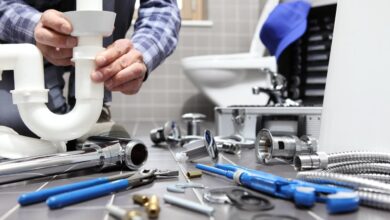What to Expect During a Water Heater Repair Service?

Dealing with a malfunctioning water heater can be a daunting experience, disrupting daily routines and comfort. A water heater issue requires timely and efficient attention, whether it’s inconsistent water temperatures, strange noises, or leaks. Understanding what to expect during a water heater repair service can alleviate concerns and help you prepare for the process. We will explore the steps typically involved in a water heater repair service from Hotter Water Plumbing. We will provide insights into the common procedures, safety considerations, and what you should anticipate when a technician arrives at your home.
Initial Assessment and Diagnosis
When a technician arrives for a water heater repair service, the first step is a thorough assessment and diagnosis of the problem. This involves inspecting the water heater and surrounding components to identify any visible signs of damage or malfunction. The technician may ask you about the symptoms you’ve noticed, such as fluctuating water temperatures, unusual noises, or any leaks. This information is crucial in guiding their inspection. The technician will then examine the water heater’s essential parts, including the thermostat, heating elements, and the tank. Using specialized tools, they may check for electrical continuity and measure the temperature and pressure to pinpoint the issue accurately. This initial assessment phase is critical to determine the appropriate action to resolve the problem effectively. Depending on the issue’s complexity, this step can take some time, ensuring that the technician understands the water heater’s condition before proceeding with repairs.
Performing Necessary Repairs
Once the technician has diagnosed the problem, the next step is performing the necessary repairs. This phase can vary significantly depending on the nature and severity of the issue. The technician can complete the repair relatively quickly for minor problems, such as a faulty thermostat or a broken heating element. They typically have replacement parts on hand, allowing them to swap out the defective component and restore the water heater to proper working condition. However, more significant issues, such as a leaking tank or severe sediment buildup, may require more extensive work.
Sometimes, the technician might need to drain the water heater to perform the repairs safely. This involves turning off the water supply and power and allowing the tank to cool before draining the water. After completing the necessary repairs, the technician will refill the tank, restore energy, and test the water heater to ensure it functions correctly. This step is crucial as it verifies that the repair has resolved the issue and that the water heater operates safely and efficiently. Before concluding the service, the technician will also clean the work area and ensure everything is in order.
Safety and Maintenance Checks
Safety and maintenance checks are integral parts of any water heater repair service. During the repair process, the technician will perform various safety checks to ensure the water heater operates within safe parameters. This includes checking for gas leaks in gas-powered water heaters, inspecting the venting system, and ensuring all electrical connections are secure and functioning correctly. These safety checks are essential to prevent potential hazards, such as gas leaks or electrical fires, which can pose significant risks to your home and family.
Additionally, the technician may perform routine maintenance tasks, such as flushing the tank to remove sediment buildup, which can improve the water heater’s efficiency and lifespan. They may also check and adjust the thermostat settings to ensure the water heater provides consistent and reliable hot water. These maintenance checks are vital in prolonging the life of your water heater and preventing future issues. The technician will also recommend ongoing maintenance and tips to keep your water heater in optimal condition, helping you avoid future repair needs.
Read also: How to Prepare Your Plumbing for Winter
Common Issues and Solutions
Water heaters can encounter various joint issues, each with unique solutions. One frequent problem is a lack of hot water, often caused by a malfunctioning thermostat or heating element. In such cases, the technician will test and replace these components if necessary. Another common issue is discolored or rusty water, which can indicate corrosion inside the tank. This might require flushing the tank or replacing the anode rod to prevent further rusting. Leaks around the water heater can stem from loose connections or a damaged tank, requiring prompt attention to avoid water damage. The technician will inspect all connections and the tank, tighten any loose parts, or recommend a tank replacement if the damage is severe.
Additionally, strange noises like popping or rumbling often result from sediment buildup inside the tank. The technician can flush the tank to remove these deposits, restoring the water heater’s efficiency and quiet operation. Understanding these common issues and their solutions helps homeowners recognize when to seek professional repair services, ensuring their water heater remains reliable and functional.
Understanding what to expect during a water heater repair service can make the process less stressful and more manageable. From the initial assessment and diagnosis to performing necessary repairs and conducting safety and maintenance checks, each step is designed to ensure your water heater functions correctly and safely. Being informed about these procedures allows you to prepare adequately for the technician’s visit and have realistic expectations about the repair process. By following the technician’s recommendations for ongoing maintenance, you can extend the lifespan of your water heater and enjoy consistent hot water in your home. Whether dealing with minor issues or more significant problems, knowing what to anticipate during a water heater repair service can provide peace of mind and help you confidently navigate the experience.




